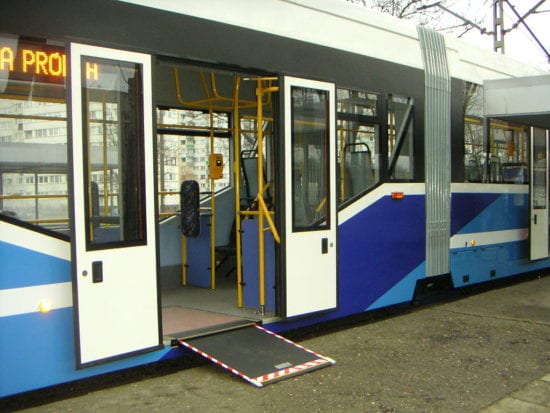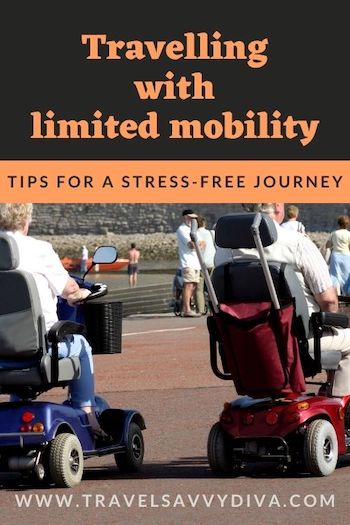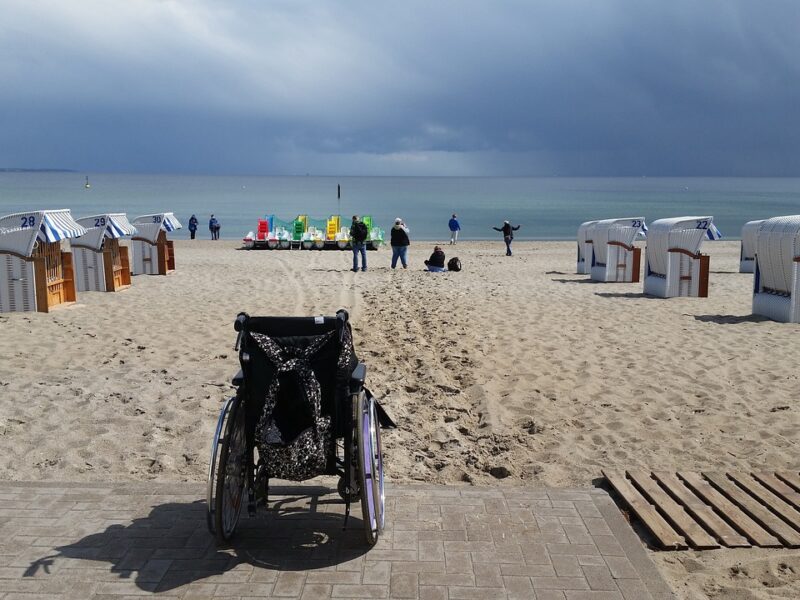If you, or someone in your travel party has limited mobility, it can be particularly stressful booking and planning a holiday.
Many questions have to be answered: Will the airline accommodate my needs, is the hotel or apartment fully accessible, will my wheelchair or scooter fit in the rooms and will I be able to get out and about once I am there.
It doesn’t have to be stressful, with some good planning and research you can jet off and enjoy a well-deserved, hassle free holiday.
My mom is a wheelchair user and over the years has experienced the highs and lows of travelling with limited mobility. Hopefully the information below can give you a few ideas and give you the confidence to get out and see the world.
Where to go
Some countries are better set up for people travelling with limited mobility. Many places in northern Europe and most places in the USA or Australia are good options for a stress-free trip.
More ‘Off-the-beaten-track’ destinations such as south east Asia, Africa and parts of southern Europe can prove to be tricky for wheelchair users.
While the larger hotels, airports and shopping malls may be accessible, the pavements can often be difficult to navigate, especially if travelling unassisted. Smaller bars and restaurants may not have easy access and this can be a frustrating downside to any trip.
Air travel
Most airlines can cater for passengers travelling with limited mobility but it is worth doing plenty of research to familiarise yourself with the differing policies.
For example, some short haul airlines seat their disabled passengers at the rear of the aircraft which can be a bit of a drag. If you are very immobile, check that your seat row has armrests which can all be raised, including the one adjacent to the aisle.
Most airports and airlines will have the facility of a ‘high lift or ambulift for passengers who are unable to climb the aircraft steps, in the case of having no air bridge access.
It is imperative that you request wheelchair assistance at the time of booking, whether you use your own wheelchair/scooter or require the use of one at the airport. Passengers requiring assistance are usually boarded first but disembarked last.
Tip – Arrive at the airport in plenty of time to take any stress out of the experience and why not treat yourself to a VIP lounge pass to make the travel day even more relaxing.
Airlines will also have a policy in the case of an emergency evacuation. Ensure that you and your travel companion are aware of this.

Accommodation
Larger hotels throughout the world usually offer ‘accessible rooms’ for people travelling with limited mobility, these usually are slightly larger, with wider doors and will have walk-in showers instead of a bath tub. Again it is worth double checking, as some hotels advertise as being accessible but this sometimes only applies to public areas while the rooms are standard size.
When you have arrived in your accommodation, remember to check the emergency procedure for guests with limited mobility. Every hotel should have a specific procedure.
Try a cruise
Cruising is an excellent option for seeing the world if you are travelling with limited mobility. No need to catch numerous flights and your luxury, fully accessible hotel travels with you.
Most cruise lines cater extensively for disabled travellers, cruise ships are easy to get around, most have accessible cabins and the staff are always on hand to offer help when required.
As a frequent cruiser myself I have never come across any part of a cruise ship that was not wheelchair accessible. On many ships, even the pools and/or hot tubs have elevators for the use of disabled passengers.
When booking a cabin, I would recommend (budget permitting) a balcony cabin or suite, this way, if you want to just relax in your own space you can enjoy your endless sea view, order room service and escape the rest of the world.
While the cruise lines themselves go out of their way to ensure all facilities are accessible, this does not apply to all ports of call.
Some smaller ports will require passengers to take small, ‘tender’ boats to the shore. Wheelchair users can be helped onto the tenders but it can be an unsettling experience and many people I have spoken to said they preferred to enjoy the quietness of the ship while everyone else is dashing off the ship for the day.
Depending on your itinerary, some ports of call may not be particularly wheelchair/scooter friendly if you go out and about under your own steam, but the immediate port area is usually fine and will have shops and bars to enjoy without heading too far away.
When I cruise, I often opt to do my own thing in port, take a cab or book an external trip but in the case of a wheelchair user I would always recommend using one of the cruise line’s official excursions. You may pay a little more, but at least the excursion desk personnel can advise which trips are suitable.All cruise lines welcome mobility scooter users and if you don’t wish to take your own, there are companies such as Scootaround which can deliver a scooter to you at the port on embarkation day.
One last tip for cruising as a wheelchair user. On embarkation day, each ship will hold its emergency procedure ‘muster drill’ in one of the public rooms, the elevators are usually put on lockdown for this, as they would be in the case of a real emergency.
Just make sure you are aware of the time and meeting point for the muster drill and allow yourself plenty of time to arrive. Also at the end of the drill, there is usually a mad rush for the elevators so just sit back, grab a drink and let the crowds disperse, the best thing about cruising is there is no rush to get anywhere!
Tip – Search through Google and join a forum for cruisers with reduced mobility, people are happy to share tips on accessible ports, the best cruise lines and specific cabin tips. These guys at Cruising With Wheels have a fun YouTube channel featuring their travels.
Travelling independently
If you enjoy complete independence with no set schedule, a road trip is a great way to explore a destination when travelling with limited mobility. Many car rental companies (especially in the US) can offer adapted vehicles to give you the freedom of the open road. Remember to plan ahead with your hotel stops to ensure the accommodation meets your needs and I recommend arriving before nightfall to avoid any stress on checking in.
Driving, especially in a foreign country, can be tiring so take plenty of breaks and plan your journey carefully, avoiding lengthy stretches of driving. If you can share the driving, even better.
When using a car overseas, it is a good idea to familiarise yourself with the guidelines for things such as handicapped parking, what to do in case of a breakdown and procedures for different filling stations if you are unable to get out of your vehicle to refuel.
Tip – Most gas stations in the US have a pre-pay system at the pump but in many cases you have to insert a zip code which makes it difficult to use a non-US credit card. I suggest setting up Apple Pay, Google Pay or similar, to avoid any hassle.
Go all-inclusive
All-inclusive resorts are also a great option for people travelling with limited mobility. Everything you need is in one location, no worrying about whether you can access bars or restaurants outside the resort. Entertainment is usually plentiful and, similar to cruise ships, the staff are always on hand should you need any kind of assistance.
All-inclusive resorts are available throughout the world these days, the more luxurious ones being in the Caribbean or in the far east.
Destination, destination…
You’ve heard of ‘location, location’ when choosing a house, well it’s more ‘destination, destination’ when travelling with limited mobility.
You may have seen photos of whitewashed villages perched on the edge of the blue Mediterranean in the Greek islands, or yearned to visit the splendid ruins of Machu Pichu in Peru. There’s nothing to stop you ticking these places off your bucket list but be aware that not all areas will be accessible by wheelchair. Do your research and avoid any unnecessary disappointment.

The USA is one of the countries that caters extensively to disabled travellers. Many sights and attractions are fully accessible and places such as Disney, Universal Studios and most other theme parks have special ‘skip-the-line’ facilities for wheelchair users.
Down to basics – healthcare and insurance
Now for the nitty gritty stuff. If your condition requires you to take specific medication or use therapeutic oxygen or special equipment, ensure you have all of this to hand when you travel.
Also it is a good idea to carry documentation from your doctor to state your requirement to take the medication or use the equipment.
Most airlines will allow the use of oxygen concentrators onboard with an accompanying doctors letter, while larger long-haul aircraft will have ‘in-seat’ oxygen for use on long flights. Again you must notify the airline prior to travel.
If you use a CPAP machine or other equipment during the night, it may be an idea to take a power strip with you, as some hotel/cruise ship rooms do not have a power outlet next to the bed. A car adapter is also useful for road trips and remember to check the voltage of the country you are visiting.
Tip – If you use regular medication, print off a list, so on the off chance you were to be hospitalised, the medical staff have a heads up on what you take.
For any traveller, insurance is one of the most important things you can pay for relating to your trip. Take out your policy immediately after booking flights/accommodation, that way you should be covered in the case of cancellation.
Check the policy cover carefully and ensure you declare any pre-existing condition at the time of taking out the policy, this way you will avoid any questions in the event of you being taken ill during your trip.
Some countries have reciprocal agreements with the health service of your home country but I would still recommend taking out insurance cover for your trip.
If you are visiting different countries during your trip, make sure your policy covers all of the countries.
In Europe, for the most part, we are used to free health cover but being taken ill, uninsured in many countries, especially the US, could set you back a small fortune.
While all the nitty gritty stuff is important for travellers with medical conditions or reduced mobility, it also applies to all travellers.
Read my travel insurance advice here.
Just go for it!
They say that travel feeds the mind and the soul. Don’t miss out on what the world has to offer, whether you are a wheelchair user, have limited sight or hearing or live with a specific medical condition, don’t let these things stop you from taking that great adventure.






What a great article! You’ve covered everything. My mum did a few huge trips by train and air when she was in the last month of her life and wheelchairbound. Dad did a lot of travelling in his later years too with limited mobility. You don’t realise the logistics involved until you’re in that situation.
Thanks! Yes it can be difficult in some places, my parents have always found travelling to the US was the easiest. I keep trying to get them on a cruise which is perfect for wheelchair users.
These are super helpful and informative tips! Will definitely refer back to them often!
Thanks Tegan!
These are really great tips. It gives a good run down of all of the things you can do with a lot of careful research.
Thank you, yes research beforehand is important!
This is awesome information. I know many people with disabilities are hesitant to travel. Great info. I will share with some people I know.
This is such a helpful post with really great tips! I’m sharing this with a friend that has a limited mobility, thanks!